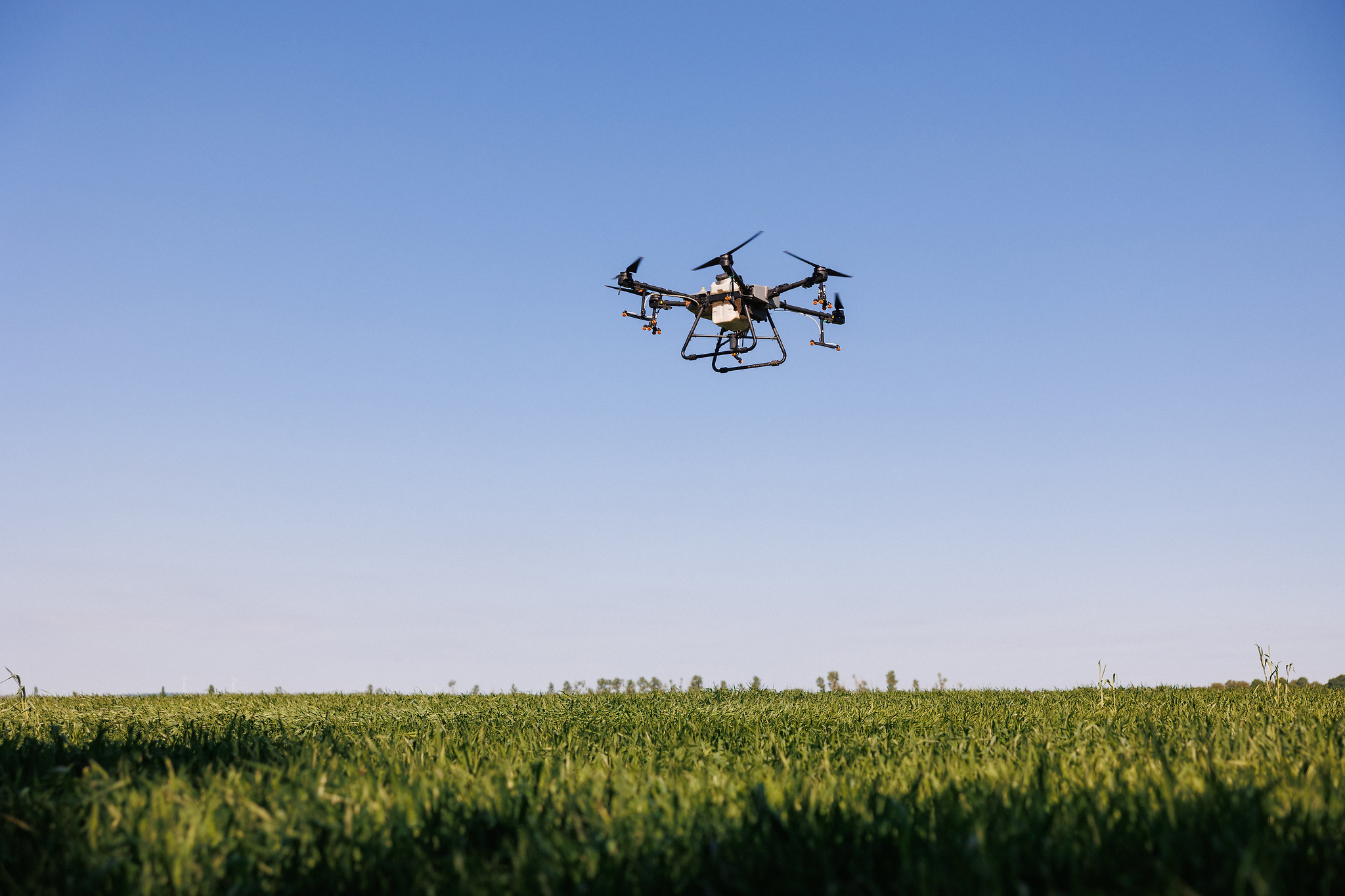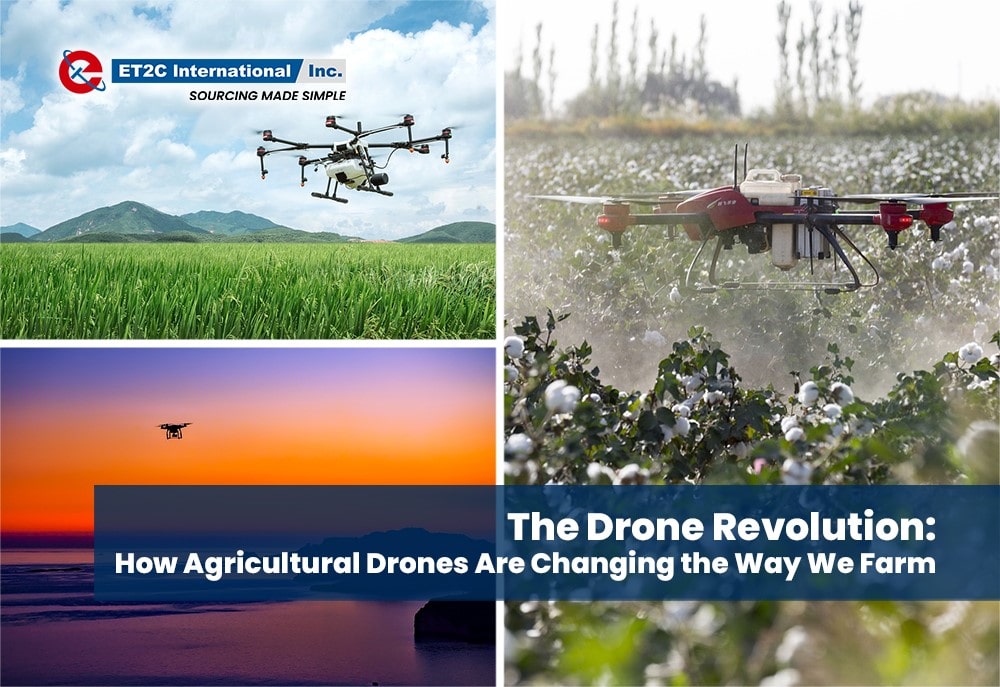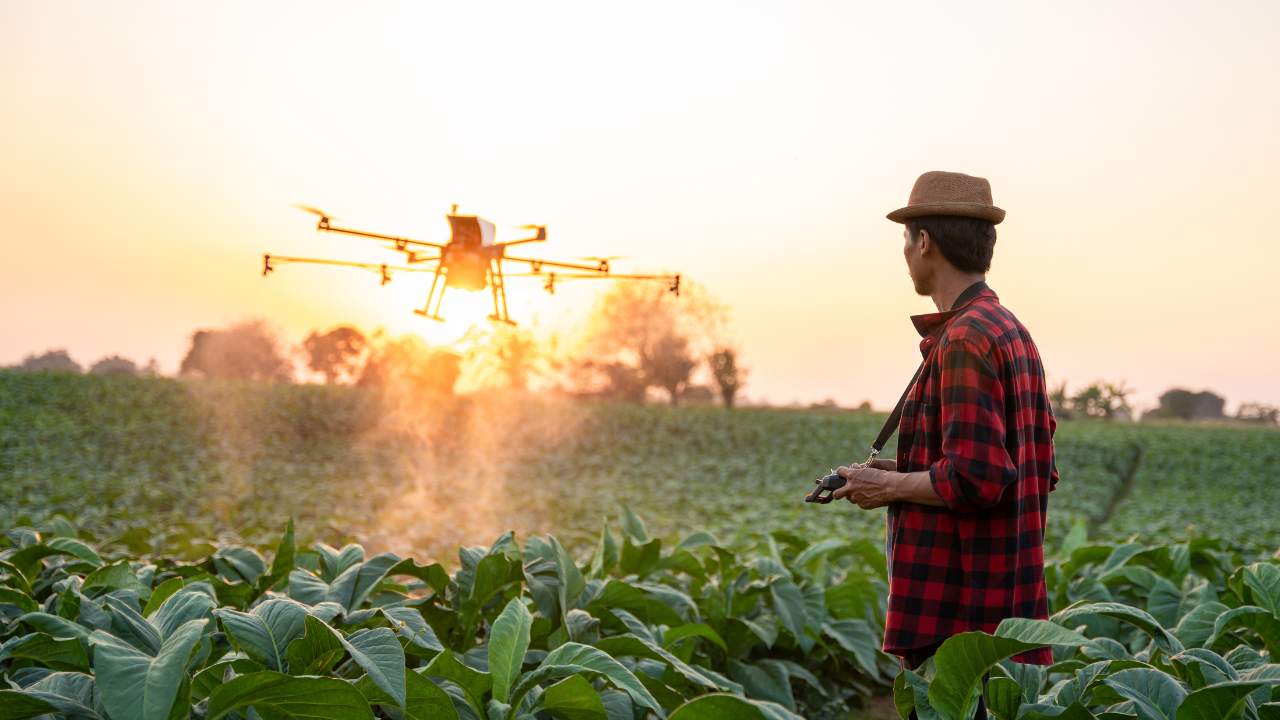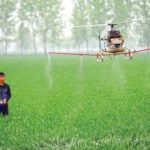Introduction
Overview of Egg Drones
Egg drones represent a fascinating intersection of technology and agriculture, serving as a game-changing tool for modern farmers. Imagine a small, agile drone soaring above vast fields, equipped with advanced sensors and cameras, diligently monitoring crop health, soil conditions, and even livestock activities. These egg-shaped drones are designed for efficiency and precision, allowing farmers to glean crucial insights about their land without having to manually traverse every inch of it. One of the most exciting aspects of egg drones is that they aren’t merely an overhead perspective but crucial instruments enhancing overall farming practices. Picture farmers using them not just for surveillance, but also for automating tasks like seed dispersal, crop spraying, and even real-time data collection. It’s no longer just about having the latest gadget; it’s about leveraging these innovations to make informed decisions that can boost productivity and reduce waste. In my own experiences visiting local farms, I’ve seen firsthand how farmers have embraced drone technology with enthusiasm. Farmers have shared stories of how they’ve transformed their operational workflows, allowing them to focus on strategy and growth while the drones handle the legwork. It’s a shift that feels less like science fiction and more like embracing a practical ally in the fields.
Importance of Innovation in Agriculture
The significance of innovation in agriculture extends far beyond the growing trend of using technology; it’s a necessity driven by increasing global challenges like food security, climate change, and land degradation. To put it succinctly, if we want to feed a still-growing population while using fewer resources, we must innovate. Here are a few reasons why:
- Resource Optimization: By utilizing technologies like egg drones, farmers can optimize water usage and fertilizer application. Rather than applying resources uniformly across a field, real-time data allows them to target areas that need particular attention.
- Increased Efficiency: With time being a precious commodity in farming, egg drones allow for faster inspections and automated tasks, decreasing reliance on manual labor and boosting output. I remember speaking with a farmer who shared that their drone has cut their monitoring time in half, allowing them to focus on other essential aspects of their operation.
- Real-Time Data Collection: These drones capture all sorts of analytics that can help in making strategic decisions. From tracking crop growth patterns to more efficiently managing irrigation systems, having data at one’s fingertips empowers farmers.
- Sustainability and Environmental Concerns: As environmental awareness grows, the agricultural community is increasingly tasked with finding sustainable practices. Egg drones facilitate precision agriculture, leading to more responsible use of chemicals and fertilizers, reducing runoff and contamination in local ecosystems.
The benefits don’t stop there. Innovative tools empower farmers to adapt to the unpredictable nature of agriculture, allowing them to be more resilient against the climate crisis. One striking example is farmers who’ve switched to drone-assisted pest control methods. Instead of broadcasting pesticides indiscriminately, they can apply them in targeted areas, which is not only more efficient but better for the environment and community health. Egg drones are more than just gadgets; they signify a shift in how agriculture can operate in the future. Through embracing these innovations, farmers are not merely keeping pace with technological advancements but also leading the way toward sustainable practices that benefit the environment and society. In summary, the evolution of agriculture calls for the integration of innovative technology like egg drones. This transition not only promises efficiency and precision but also fosters a culture of sustainability that is vital for the planet’s health. The road ahead for agriculture looks promising, and with egg drones, farmers are venturing into uncharted territory armed with the best tools possible. Whether you’re a seasoned farmer or a curious onlooker, the integration of egg drones is a trend you’ll want to keep an eye on! 🌱🚁

Evolution of Agriculture Technology
Traditional Farming Practices
Agriculture has always been the backbone of civilization, evolving from simple subsistence farming to intricate systems supported by advanced technology. Traditional farming practices are rooted in a time when farmers relied heavily on their intuition and the rhythms of nature. Take a moment to picture fields worked by hand with basic tools—plows pulled by oxen, seed sown individually, and crops harvested one stalk at a time. This method defined the agricultural landscape for centuries. In those early days, farmers relied on:
- Seasonal Knowledge: Understanding their local climate patterns, soil types, and crop rotations was crucial. They often used a trial-and-error approach, leading to various local adaptations.
- Manual Labor: Everything from planting to harvesting depended on the sheer strength of human and animal labor—time-consuming, but it provided intimate knowledge of the land.
- Natural Fertilizers: Farmers would use organic matter, like compost and manure, to enrich the soil, promoting sustainability in their ecosystems.
- Biodiversity: Many traditional farmers grew a variety of crops in close proximity, fostering a natural balance and resilience against pests and diseases.
I remember visiting a heritage farm where the farmers spoke passionately about heirloom crops and the practices passed down through generations. It was clear that traditional farming, while labor-intensive, also created a strong bond between farmers and their land. However, as populations grew and demands changed, traditional methods began facing challenges in terms of sustainability and productivity.
Adoption of Drone Technology
Fast forward to today, where drone technology is reshaping the agricultural landscape. The adoption of drones in farming is not just about having the latest gadget—it’s a strategic improvement to age-old practices. Farmers are transitioning from traditional to tech-driven methods that enhance management and efficiency. Let’s explore how this shift is taking shape:
- Precision Agriculture: Drones enable farmers to gather data that provides detailed insights into crop health. Imagine flying a drone over a field and receiving instant feedback about drought stress! This data helps farmers make informed decisions, allowing for targeted interventions rather than a one-size-fits-all approach.
- Mapping and Planning: With the capability to create detailed aerial maps, drones assist farms in planning specific actions like planting, irrigation, and nutrient distribution. This can save time and minimize waste significantly.
- Autonomous Operations: Today’s drones can perform long-lasting missions autonomously. For instance, a farmer can set their drone to cover a large area while they tend to other vital farm operations— truly a hands-free method that allows for multitasking.
- Crop Health Monitoring: Equipped with multispectral cameras, drones can assess plant health by capturing images at various wavelengths. This means farmers can identify diseases early on, saving them from losing entire harvests due to late intervention.
From my conversations with local farmers who have implemented drone technology, the excitement is palpable. One farmer shared how drones transformed his crop inspections, slashing a once-a-week task down to just a few hours a month, granting them more time to innovate further on their farm. Nevertheless, like any technological adoption, blending drones into traditional methods comes with hurdles. Understanding how to use this technology effectively requires training, and integrating it seamlessly into existing operations can initially pose challenges. But the long-term benefits often outweigh the early concerns. As we witness this evolution, it’s inspiring to see how traditional farming practices are collaborating with modern capabilities. The fusion of age-old wisdom with cutting-edge technology, particularly drone technology, is paving the way for a more sustainable and productive farming future. With egg drones and similar innovations, farmers are embracing a new era that respects hard-earned traditions while excitedly welcoming what’s next. 🌾🚀

Understanding Egg Drones
Features and Capabilities
Egg drones are not just traditional drones with a curious shape; they come packed with features that are revolutionizing the agricultural landscape. These drones are designed for efficiency, precision, and ease of use on farms. Let’s dive into what makes them unique!
- Compact Design: Resembling an egg, these drones are built for versatility. Their aerodynamic shape reduces wind resistance, allowing them to maneuver even in less-than-ideal weather conditions. Farmers can rely on them irrespective of environmental challenges!
- High-Resolution Cameras: Equipped with advanced imaging technology, egg drones can capture high-resolution aerial images of crops. Some models even offer multispectral cameras, allowing farmers to assess crop health and monitor moisture levels. It’s like having a bird’s-eye view of your entire farm!
- Real-Time Data Analysis: Egg drones are capable of processing images and data in real time. For instance, farmers can receive instant feedback on their crop status, enabling timely interventions. This immediate information loop is crucial in making rapid and informed decisions.
- Automated Flight Patterns: Farmers can set predetermined flight paths for the drone, allowing for systematic monitoring of various fields without the need for continuous manual control. This capability means less work for farmers and more accurate data collection.
- Payload Capacity: Modern egg drones can carry various payloads, including fertilizers and seeds. This ability opens the door for automated crop spraying and targeted seed planting, reducing both time and labor costs significantly.
In my conversations with tech-savvy farmers, many shared stories about how these features have helped them simplify their operations. One farmer told me about a recent instance where a drone detected early signs of pest infestation in just a small portion of his field. Thanks to the drone’s prompt data relay, he was able to address the issue swiftly, preventing a major potential loss.
Benefits for Farmers
The impact of egg drones is profound, presenting numerous advantages for farmers looking to streamline their operations and enhance productivity. Let’s break down some of the key benefits:
- Increased Efficiency: Egg drones can cover large areas in a fraction of the time it would take a human to do so. For example, a farmer can inspect multiple fields in mere hours instead of days, returning precious hours to manage other tasks.
- Cost Effectiveness: Investing in egg drones can lead to sizable long-term savings. By spotting issues before they escalate, farmers can reduce the costs associated with crop loss, chemical overuse, and labor inefficiencies. Imagine cutting your fertilizer costs by applying only what’s necessary!
- Enhanced Productivity: Using egg drones to monitor crop health can lead to increased yields. By accurately identifying areas that need attention, farmers can tailor their resources correctly. A farmer I met recently shared his joy when his yield increased by 20% after employing drone technology to manage his grapes more effectively.
- Sustainability: These drones promote sustainable farming practices by allowing for precise application of water and chemicals, minimizing waste and reducing environmental impact. A farmer dedicated to organic practices mentioned that the drone helps him avoid overspraying—something that genuinely aligns with his values.
- Data-Driven Decisions: The analytics provided by egg drones empower farmers to make more informed choices regarding planting schedules, resource allocation, and pest control strategies. This shift from intuition-based farming to data-driven management marks a significant evolution in agricultural practices.
As we explore the myriad of features and benefits that egg drones bring to the table, it becomes clear that they are not merely gadgets but vital tools for the modern farmer. By integrating egg drones into their operations, farmers can work smarter, not harder—redefining the future of agriculture with innovation and efficiency. 🌾🚁 In essence, as you reflect on the value these drones bring, consider how they can enhance your own farming practices, bridging the gap between tradition and future possibilities. With such promising technologies at farmers’ fingertips, the sky truly is the limit!

Implementing Egg Drones on Farms
How Egg Drones Work
As farmers are embracing the innovative world of egg drones, understanding how these devices function is key to unlocking their full potential. Let’s take a closer look at how these technological marvels operate.
- Aerial Imaging: Egg drones are equipped with high-definition cameras and, in many cases, multispectral sensors. This allows them to capture images at various wavelengths, which is essential for assessing crop health. When you fly a drone over your fields, it collects data that reveals information about things like nutrient deficiencies or pest infestations.
- Autonomous Flight: Many egg drones are designed to operate autonomously. Farmers can pre-program flight paths, which means the drone can automatically cover specific areas without constant manual control. This saves time and allows farmers to focus on other pressing tasks—like enjoying a cup of coffee while the drone does its work!
- Data Processing: Once the drone has completed its flight, all the data it collected is uploaded to a cloud-based platform. Here, powerful data analysis software interprets the images and provides actionable insights in real-time. I remember chatting with a farmer who mentioned how his drone, with the help of the software, identified variances in soil moisture levels across his fields, prompting targeted irrigation adjustments.
- User-Friendly Interfaces: The best egg drones come with user-friendly interfaces and mobile apps, making it easy for farmers to access data on the go. Whether you’re in your barn or out in the fields, this real-time feedback keeps you informed and in control.
Adopting egg drones isn’t just about flying high; it’s about harnessing data to make informed decisions that lead to tangible improvements on the farm. And the best part? Many drone manufacturers are focusing on ensuring that even those with minimal tech experience can learn to operate these devices effectively.
Integration with Farming Operations
Successfully integrating egg drones into farming operations requires thoughtful planning and execution. Let’s explore the key steps and considerations that can make the transition seamless and effective:
- Training and Support: To maximize the benefits from egg drones, farmers often require some level of training. Many companies provide educational resources, tutorials, and hands-on workshops. Attending a local workshop can be a game-changer, allowing you to ask questions and learn from experts in real-time, speeding up your learning process.
- Assessing Farm Needs: Before jumping in, it’s essential to evaluate your specific needs. Do you primarily deal with crop monitoring, or are pest control and irrigation management higher priorities? Understanding your goals will help you select the right features and functionalities for your egg drone.
- Setting Up a Data System: Integrating the data collected from drones into your existing management systems can enhance decision-making. For example, if you’re already using farm management software, ensure that your drone data can be imported or synced easily. This creates a cohesive view of your operations.
- Collaborating with Agronomists: Working with agronomists or consultants can provide valuable insights into how best to utilize the data collected by drones. Many farmers I spoke with have partnered with agronomists to fine-tune their crop management practices based on the drone analytics.
- Trial Runs: Consider starting with a few trial runs before fully committing to a comprehensive drone strategy. Conducting small-scale tests allows you to gauge the effectiveness of the drones in your unique farming environment and make adjustments as necessary.
- Feedback Loop: Establishing a feedback loop within your team is essential. Encourage everyone involved in operations to share their experiences and insights regarding drone usage. This open communication can lead to improved processes and creative ways to leverage drone technology.
Integrating egg drones into your farming operations can feel like an uphill battle at first, but the rewards are truly worth it. By adhering to these steps, farmers can embrace the technology with confidence, transforming their farming practices in ways they never thought possible. In the end, egg drones symbolize an exciting frontier in agriculture, where innovation meets tradition—offering efficiency, sustainability, and improved management all in one sleek package. The journey toward becoming a tech-savvy farmer may be challenging initially, but the results can turn your farming operation into a thriving enterprise. 🚜🌿

Impact of Egg Drones on Crop Yield
Efficiency in Monitoring Crops
The integration of egg drones into farming has ushered in a new era of efficiency, especially when it comes to monitoring crops. Traditionally, farmers would spend countless hours manually inspecting fields, often leading to uncertainty and reactive measures. Now, with drone technology, monitoring crops has become seamless and incredibly efficient.
- Rapid Coverage: Egg drones can cover a large area in a fraction of the time it takes to walk through fields. Farmers report that these drones can survey entire farms in less than an hour, gaining insights that would otherwise take days to collect.
- Real-Time Feedback: With egg drones, immediate access to crop status is a game changer. For instance, as a farmer flies a drone over their fields, they receive instant data on vegetation health and soil conditions. This immediate feedback allows for swift interventions—whether it be adjusting irrigation systems or applying nutrients as needed.
- Identifying Problem Areas: Drones equipped with advanced cameras can quickly identify stress points in crops—like areas affected by pests, diseases, or nutrient deficiencies. Imagine flying your drone over a vast cornfield and spotting wilting plants before they become a larger issue! This early detection means that farmers can take targeted actions and minimize crop loss.
I fondly recall visiting a farmer who demonstrated his drone monitoring setup. With just a few clicks, he showcased areas in his fields requiring attention. Instead of spending hours identifying problem spots blindly, he could focus on those specific areas, significantly enhancing his productivity.
- Cost-Effective Monitoring: The efficiency gained through drone usage translates into cost savings. Farmers can reduce the frequency of manual labor, cut down on wasted resources, and ultimately improve the bottom line. In essence, what was once a laborious task has now become a quick, efficient process.
Enhancing Precision Agriculture Practices
The use of egg drones is not just about monitoring; it is also about enhancing precision agriculture practices in profound ways. Precision agriculture is grounded in using detailed, data-driven insights to make informed decisions, and drones fit perfectly into this model.
- Targeted Inputs: With accurate data derived from drone imagery, farmers can apply fertilizers, pesticides, and herbicides more precisely. This means they can target areas that actually need treatment, thereby minimizing waste and reducing their overall chemical usage. The result? Healthier crops and a healthier environment.
- Water Management: Drones can assess water stress across fields, allowing farmers to make data-based decisions about irrigation. For example, during a tour on a farm, I noticed how the drone identified dry patches often overlooked. This led to targeted irrigation that not only improved crop resilience but also conserved water—a precious resource.
- Crop Health Analysis: Drones can analyze crop health through vegetation indices like NDVI (Normalized Difference Vegetation Index), which highlights areas of vigorous growth versus those struggling. By harnessing this information, farmers can more effectively decide where to allocate their resources, ensuring optimal crop performance.
- Yield Prediction: By consistently monitoring crop health throughout the growing season, drones can provide estimates on potential yields. Knowing what to expect helps farmers make informed decisions regarding harvesting, marketing, and financial planning.
- Data Syncing: When synced with existing farm management software, drone data enriches the entire precision agriculture framework. This streamlined integration creates a comprehensive picture of farm health and performance. Farms that use these data systems collectively report greater confidence in their decision-making processes.
In summary, the impact of egg drones on crop yield is multi-faceted and transformative. The efficiency they bring to monitoring crops allows farmers to operate proactively rather than reactively. Furthermore, enhancing precision agriculture practices ensures that every decision is informed by data, leading to optimal resource usage and increased crop performance. With egg drones in your farming toolkit, you’re not just keeping pace with modern agriculture—you’re taking bold steps into the future, transforming challenges into sustainable solutions that will benefit both your yields and the environment. The revolution in agriculture is unfolding right above us, and it’s time to embrace it! 🌾🚁

Economic and Environmental Advantages
Cost Savings for Farmers
The economic advantages of implementing egg drones on farms can be substantial, making them an attractive option for farmers looking to improve their bottom line. With rising input costs and increasing pressures on profit margins, every little bit counts. Let’s explore how egg drones contribute to cost savings.
- Reduced Labor Costs: Traditional farming demands extensive manual labor for tasks like crop monitoring and pest control. With egg drones, these tasks can be automated or significantly sped up. Imagine replacing hours of tedious walking through fields with a quick drone flight, liberating both time and resources. A farmer I spoke with shared that he cut down his crop inspections from several days to just a couple of hours a month!
- Efficient Resource Allocation: Egg drones allow for precise application of fertilizers, pesticides, and water. Instead of applying these inputs uniformly across a field (where much might go to waste), drones can target specific areas based on actual needs. This means fewer resources used overall, which translates directly into cost savings. For example, when a neighbor switched to drone-assisted spraying, they reported saving roughly 25% on chemical expenses!
- Improved Crop Performance: By employing egg drones for detailed monitoring and early detection of issues, farmers can enhance their crop yields. This not only boosts profits but also reduces financial losses associated with crop failures. One local farmer recounted that after adopting drone technology, her overall crop yield increased by 30%, leading to significantly higher returns at market.
- Maintenance and Repair Predictions: Drones can also be outfitted to inspect infrastructure, such as irrigation systems and barns. Detecting issues early on means farmers can schedule maintenance before major failures occur, avoiding costly repairs and downtime. Who wouldn’t want to save money while preserving valuable equipment?
By investing in egg drones, farmers are not only cutting costs today; they’re future-proofing their operations against economic uncertainties.
Sustainability Benefits of Egg Drones
The environmental advantages tied to the implementation of egg drones cannot be understated. As global concerns grow over climate change and resource depletion, sustainable farming practices become imperative. Egg drones are a major ally in this endeavor.
- Precision Agriculture Practices: As mentioned earlier, the pinpoint accuracy of drone technology enables farmers to apply inputs where they are truly needed. This minimizes chemical runoff and reduces the likelihood of harming surrounding ecosystems. For instance, consider a farmer who only treats pest-infested areas rather than spraying the entire field—this targeted approach minimizes chemical exposure for helpful insects and nearby water systems.
- Water Conservation: With drones, farmers can efficiently monitor soil moisture levels and detect areas of drought stress. Armed with this data, they can optimize irrigation schedules to ensure that water is used judiciously. After implementing drone technology, one farmer exclaimed how he had reduced water usage by almost 30%, significantly impacting his operation’s ecological footprint.
- Biodiversity Preservation: Drones can help farmers adopt practices that support biodiversity. By monitoring various crops and their interrelations, farmers can avoid practices that harm native species and promote a healthier agricultural ecosystem. For example, several farmers have used drones to track the growth of cover crops that help rebuild soil quality and encourage wildlife habitats.
- Carbon Footprint Reduction: Enhanced efficiency leads to a decrease in fuel consumption, as farmers can avoid repetitive trips across their fields. This reduction in vehicle use directly contributes to lower greenhouse gas emissions. Plus, the overall healthier crops resulting from precision applications contribute positively to carbon sequestration.
- Data-Driven Decisions for Environmental Management: The data captured by egg drones helps farmers make informed decisions that align with environmental best practices. By integrating this information with existing environmental management strategies, farms can adapt and continually improve their sustainability efforts.
In conclusion, the economic and environmental advantages of egg drones present a compelling case for their integration into modern farming operations. Not only can they lead to significant cost savings and increased profits, but they also contribute to more sustainable agricultural practices that protect our planet. As the landscape of agriculture evolves, egg drones stand at the forefront, providing farmers with the tools they need to thrive economically while also being responsible stewards of the land. The future of agriculture looks promising when innovation and environmental care go hand in hand! 🌱🚁

Challenges and Future Prospects
Regulatory Hurdles
While the advantages of egg drones in agriculture are clear, there are still several challenges that farmers face, particularly when it comes to regulatory hurdles. As the use of drone technology becomes more widespread, understanding the regulations governing their operation is crucial.
- Licensing and Certification: Many countries require drone operators to obtain licenses or certifications to fly drones legally. This often involves completing training programs and passing examinations. For farmers who are already managing busy schedules, navigating this bureaucracy can feel like an overwhelming task. A farmer I spoke with shared that he was daunted by the certification process but realized it was a small price to pay for the benefits derived from drone use.
- Airspace Regulation: Drones are considered “unmanned aerial vehicles” and are subject to specific airspace restrictions. Farmers must be aware of local regulations regarding where and when they can fly their drones. In some areas, airspace above agricultural land might be restricted due to proximity to airports or other sensitive locations, creating potential obstacles to normal drone operations.
- Data Privacy and Security: As drones collect vast amounts of data, concerns regarding data privacy and security are prevalent. Farmers need to be aware of the implications of data sharing and potential liability issues, especially if the drones capture images or data beyond their property. Addressing these issues requires clear policies and guidelines.
- Liability and Insurance: Understanding liability in case of accidents or malfunctions is critical. Farmers need to consider whether their existing insurance covers drone operations or if they must purchase additional coverage to protect against potential risks. This can add another layer of complexity and cost to implementing drone technology.
Despite these challenges, many regulatory bodies recognize the potential of drones in agriculture and are working to create frameworks that support their use. It’s essential for farmers to stay informed about local regulations and participate in discussions to shape policies beneficial to their operations.
Innovations in Drone Technology
While regulatory challenges exist, the future prospects for egg drones in agriculture are incredibly promising, primarily due to ongoing innovations in drone technology. The advancements being made are revolutionizing how farmers manage their operations.
- Improved Battery Life and Range: One of the most significant limitations of drone technology has been battery life. Soon, we will see advancements in battery technology that extend flight times and ranges. Imagine being able to monitor even larger fields in a single flight! Farmers will benefit from longer operation periods without needing to recharge frequently.
- Enhanced Artificial Intelligence (AI) Integration: As drones become increasingly intelligent, we can expect to see enhanced AI algorithms capable of analyzing data on the fly. This could lead to immediate response strategies for threats like pests or disease outbreaks, saving farmers valuable time and resources. The AI capabilities would allow drones to autonomously identify crop stress signals and suggest optimal solutions.
- Collaboration with Other Technologies: The future will see greater synergy between drones and other advanced technologies, such as Internet of Things (IoT) devices and big data analytics. Drones will gather data that can be aggregated and analyzed alongside other farming data, creating a comprehensive view of farm health. Farmers can make decisions based on a holistic understanding of their operations.
- Autonomous Drones: The next generation of drones is likely to include full autonomy, allowing them to fly, assess, and make decisions without human intervention. Picture drones that can automatically recognize when crops need irrigation or replenishment and take action—transforming farming practices by making them even more efficient.
- Advanced Sensors and Camera Technology: The evolution of sensor technology will continue to enhance the capabilities of egg drones. We may soon see drones equipped with sensors that can analyze soil composition or detect specific nutrient deficiencies at an unprecedented level. This technology allows farmers to tailor interventions more precisely.
In summary, while there are regulatory hurdles to overcome, the future of egg drones in agriculture looks very bright. Innovations in drone technology promise to make these tools even more powerful and adaptable, empowering farmers to increase productivity and sustainability in ways that were once unimaginable. As you consider incorporating egg drones into your farming practices, staying informed about regulatory environments and the latest advancements will be crucial. Embracing these innovations not only benefits your farm but also contributes positively to the broader agricultural community and environment. The future is taking flight, and it’s time to soar along with it! 🌾🚀



